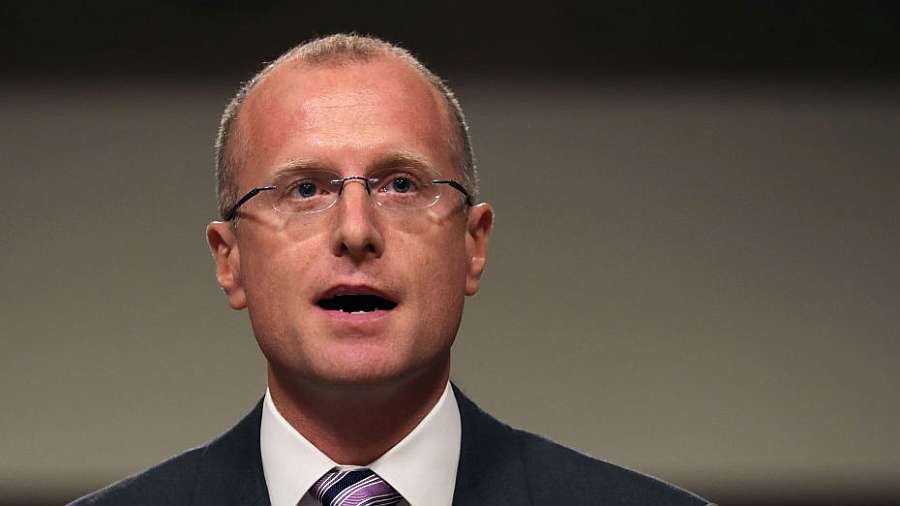FCC Proposes Broadband ‘Nutrition Label’ Regime
Commissioner Brendan Carr says Big Tech should be held to same transparency mandate

The Federal Communications Commission has voted unanimously on a proposed regime for implementing Congress's mandate that internet-service providers tell their customers up front about the service those customers are buying via point-of-sale labels, and one commissioner used the agency’s January public meeting to call for Big Tech to be held to the same standard.
The FCC since 2016 has allowed ISPs voluntarily to use such so-called nutrition labels as proof that they are adhering to its transparency requirements. But chairwoman Jessica Rosenworcel made clear that the difference now is the label is mandated.
The FCC is proposing to use that 2016 label format, which resembles a food nutrition label, as the mandated one, but asks whether there need to be any changes or additions.
Among the provisions in the Biden administration’s Infrastructure Act — which allocated billions of dollars for broadband, including subsidies for broadband service — was that the FCC mandate the broadband “nutrition label” so consumers can know the speed and quality of service they are getting at what price and with what fees attached.
According to the FCC Notice of Proposed Rulemaking, the label has to include “accurate information about prices, introductory rates, data allowances and broadband speeds,” as well as “management practices.” Any ISP that does not hew to the letter of the label could be pursued by the Federal Trade Commission under its authority to prevent “false and deceptive” advertising.
The labels must be accessible to the disabled and must promote equity in the provision of service.
The item asks a number of questions, including on how to ensure the accuracy of the labels' content and the proper implementation timelines.
The smarter way to stay on top of the multichannel video marketplace. Sign up below.
Also: FCC Tees Up Broadband Nutrition Labels
Commissioner Geoffrey Starks, a Democrat, said he was pleased to support the item and begin the process of expanding public access to better information on broadband offerings. He said the nutrition labels will help everyday households compare prices and find the best package and deal for them.
Rosenworcel said the labels would help stop unexpected costs and fees in the “fine print.”
And while the 2016 label was voluntary, Congress gave the FCC support for a mandate that would hold ISPs to their promises, which would mean better service and better prices.
Commissioner Brendan Carr, a Republican, supported the item, but wanted to make the point that the FCC already had transparency rules on the books. “The FCC has long worked to promote transparency, including through specific rules,” he said. “Right now, we have rules on the books, for instance, that require broadband providers to publicly disclose accurate information regarding their network management practices, performance characteristics, and commercial terms sufficient to enable consumers, businesses, and entrepreneurs to make informed choices.”
While Carr voted to launch the process mandated by Congress, he suggested that using the 2016 label “could artificially constrain the agency’s ability to make decisions that reflect today’s market for connectivity.”
He also put in a plug for requiring labels from edge providers, which he has been highly critical of.
“[W]hile I am open to ways we can improve the transparency and disclosure rules that apply to broadband providers, I continue to believe that the real black box is in a different portion of the Internet ecosystem — Big Tech,” he said. “Big Tech companies provide far less transparency than broadband providers regarding their practices and commercial terms. In fact, just this week, four state AGs sued Google for misleading consumers about when Google was tracking their location information. I have been clear that I favor — and consumers deserve — greater transparency from these companies. And I have previously called for the FCC and FTC to take action here. The transparency rule that currently applies to broadband providers or even the nutrition label approach we propose here would be a good place to start when it comes to bringing much-needed and long-overdue transparency to Big Tech. This would ensure that all Internet users, from entrepreneurs to small businesses, have the information they need to make informed choices.”
Advocates See a Transparency Tool
“A broadband label is a great tool to increase transparency and help consumers better understand what they are paying for with their internet plan,” said Jonathan Schwantes, senior policy counsel at Consumer Reports. “And for those lucky consumers who enjoy a choice of ISPs, a clear, uniform label will allow those consumers to comparison shop.
“For far too long ISPs have gotten away with confusing information about the internet service they provide, hidden data caps, and bills that vary by ISPs filled with a laundry list of mysterious fees buried in the fine print. The label is a critical step in shedding more light on these practices, and will help consumers better understand what has become the essential service of the early 21st century.”
“Today’s FCC vote is a welcome step forward and a win for consumers,” Joshua Stager, deputy director for broadband and competition policy for New America‘s Open Technology Institute, said. "OTI has long called for truth-in-billing for the broadband industry, which is notorious for keeping customers in the dark. Hidden fees, surprise bills, and dense contracts are familiar problems to anyone who deals with these companies.
“The broadband nutrition label cuts through this confusion by clearly disclosing the cost and terms of service in a simple, consumer-friendly format.”
Contributing editor John Eggerton has been an editor and/or writer on media regulation, legislation and policy for over four decades, including covering the FCC, FTC, Congress, the major media trade associations, and the federal courts. In addition to Multichannel News and Broadcasting + Cable, his work has appeared in Radio World, TV Technology, TV Fax, This Week in Consumer Electronics, Variety and the Encyclopedia Britannica.

